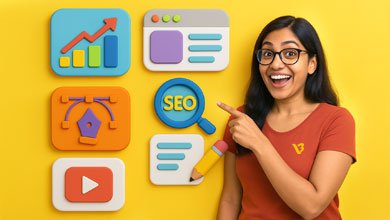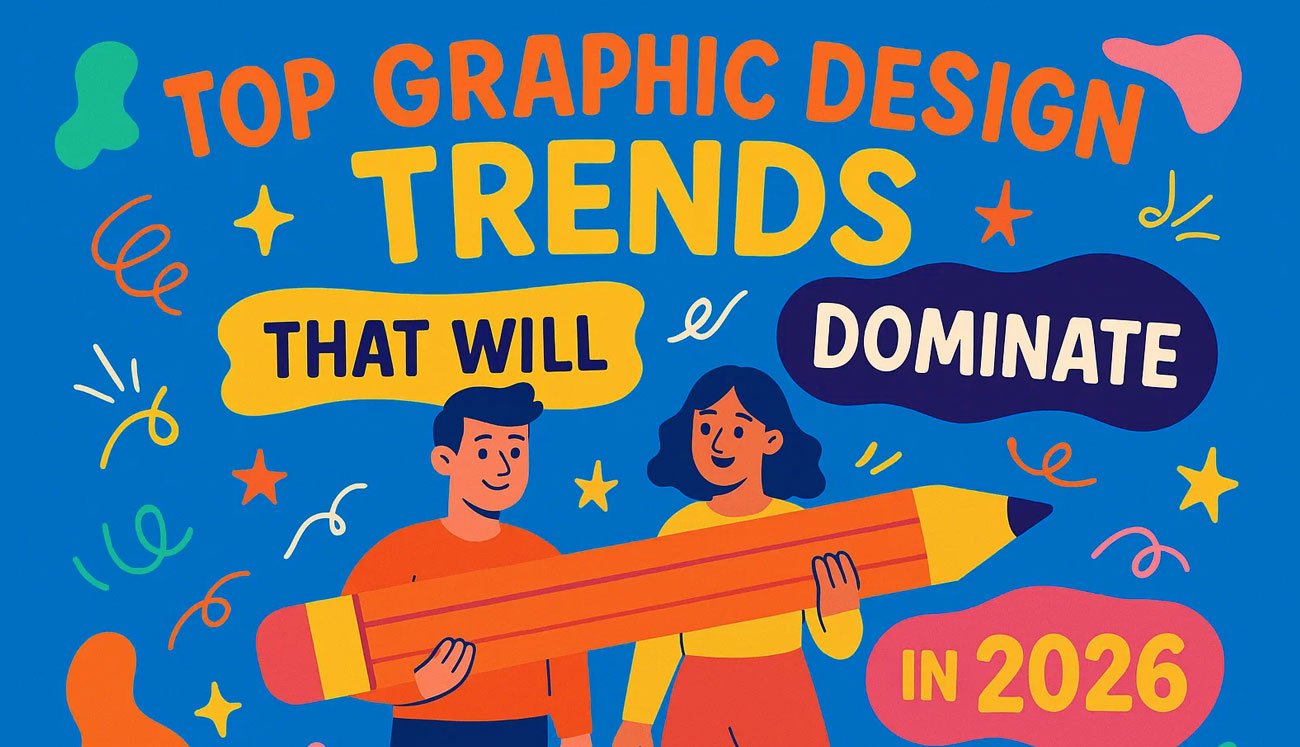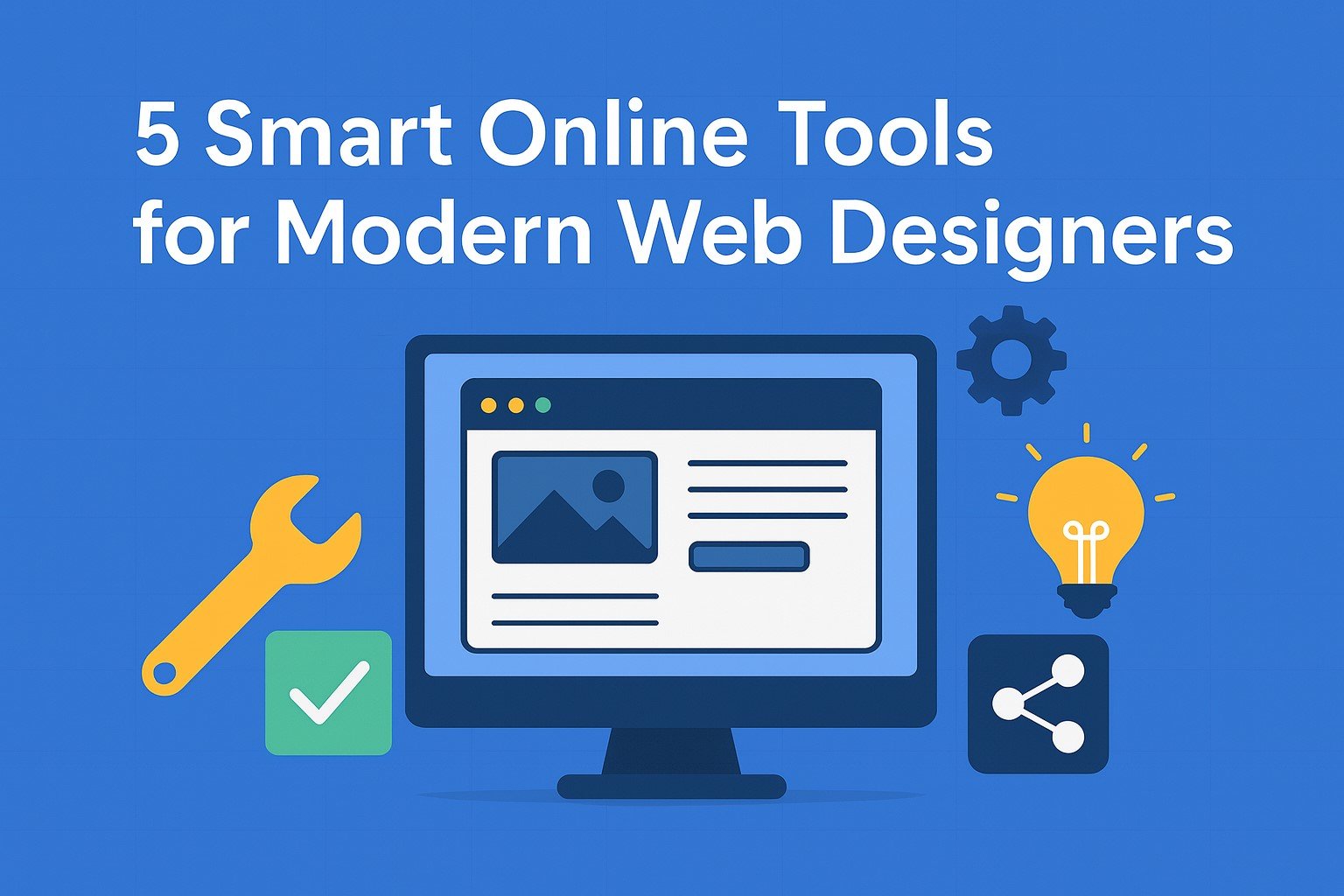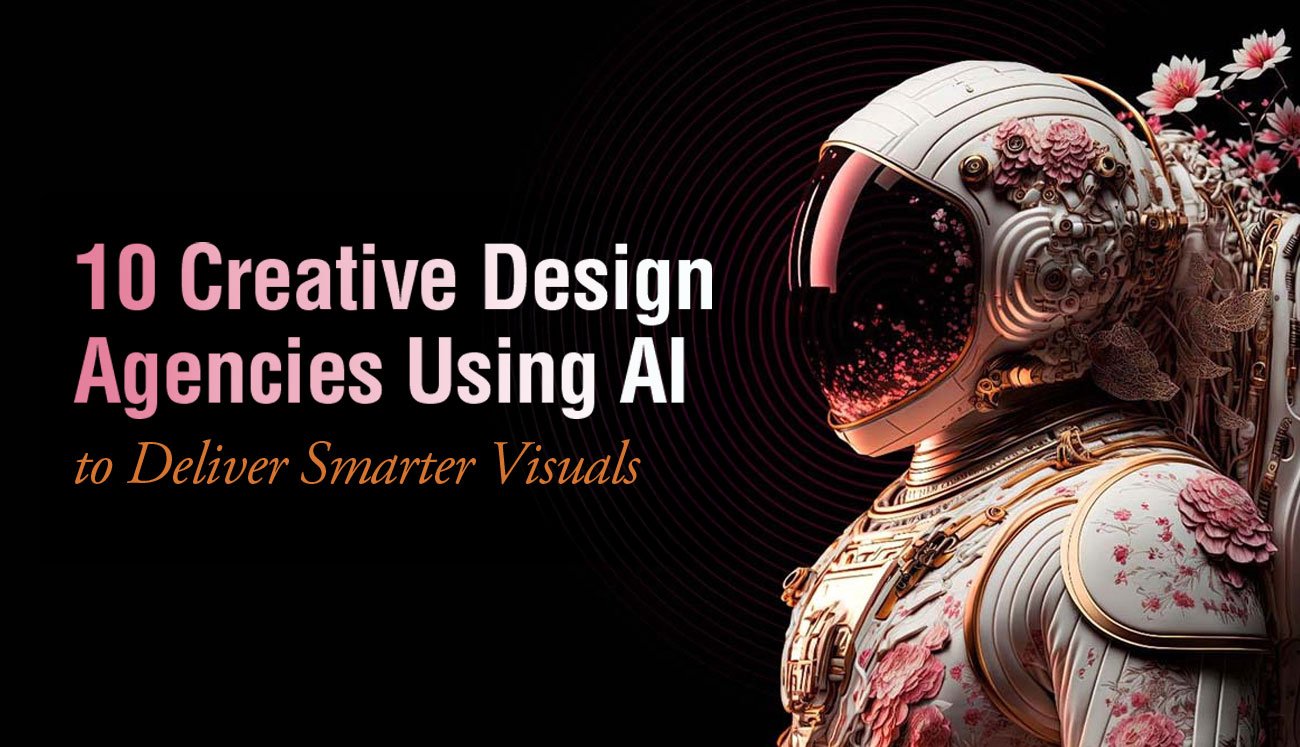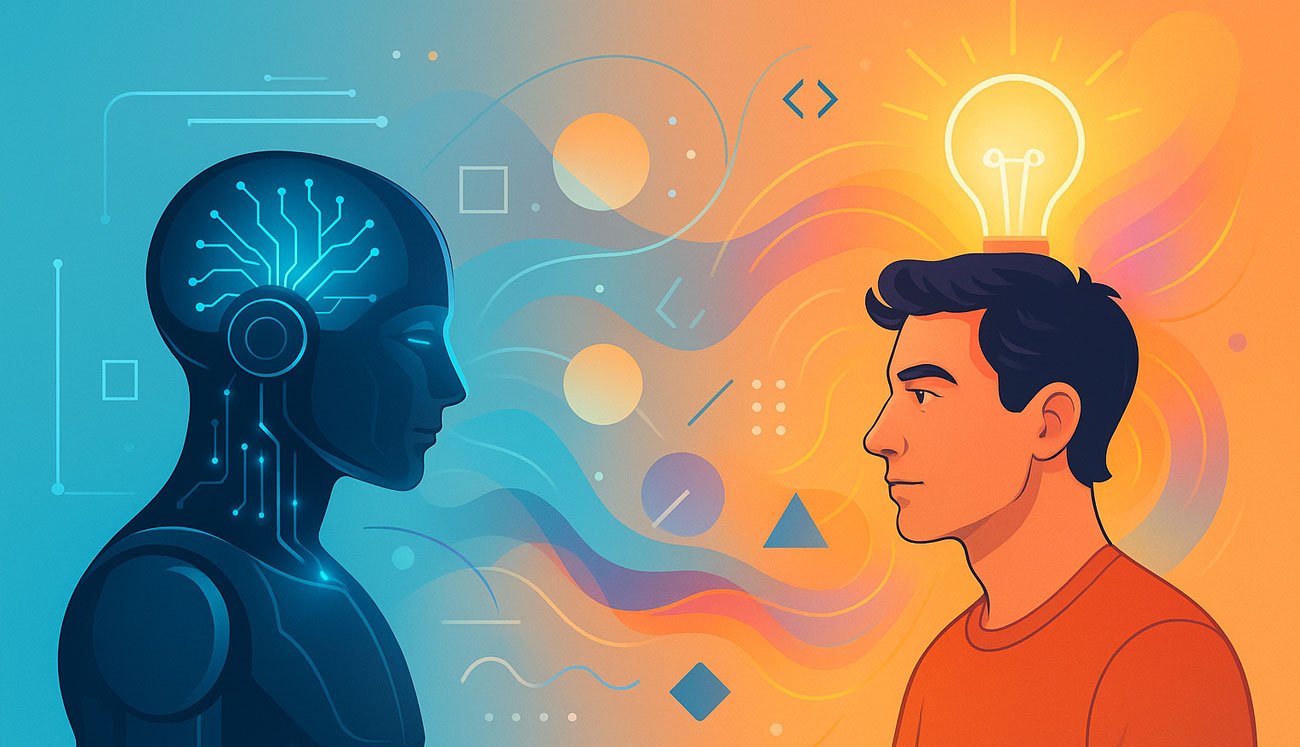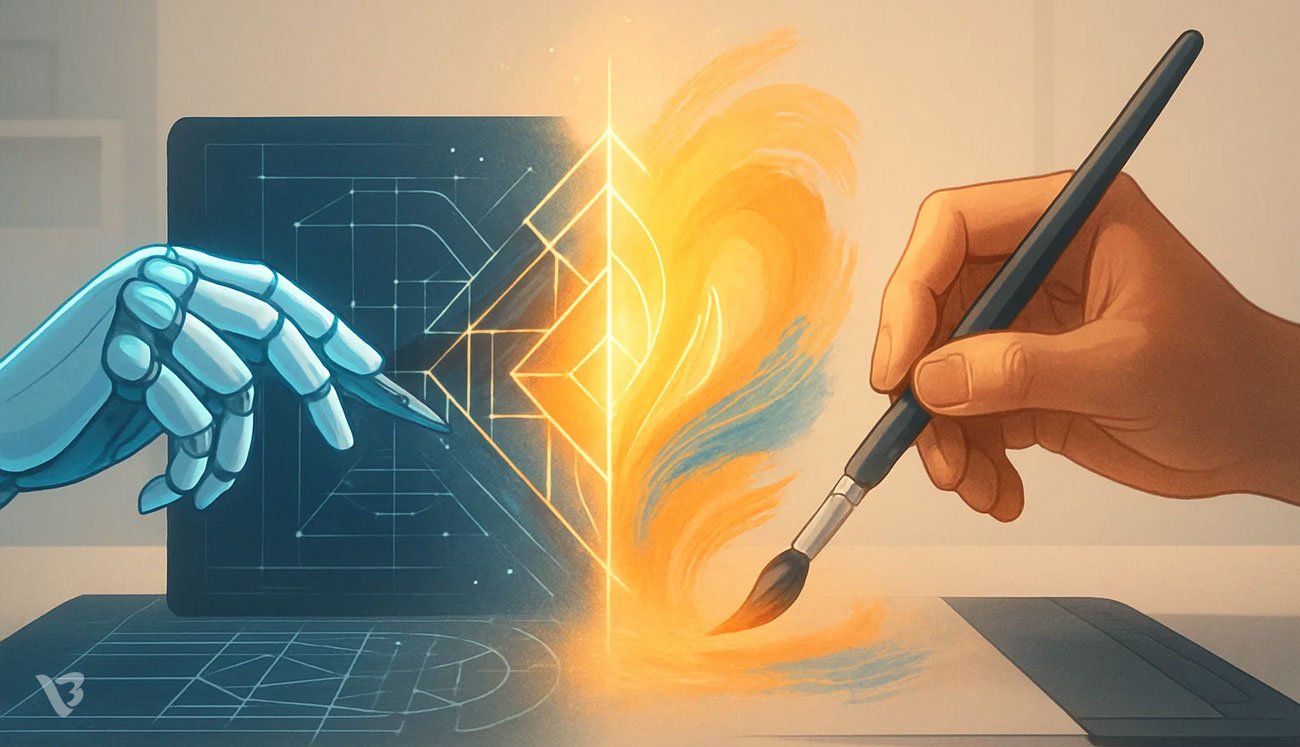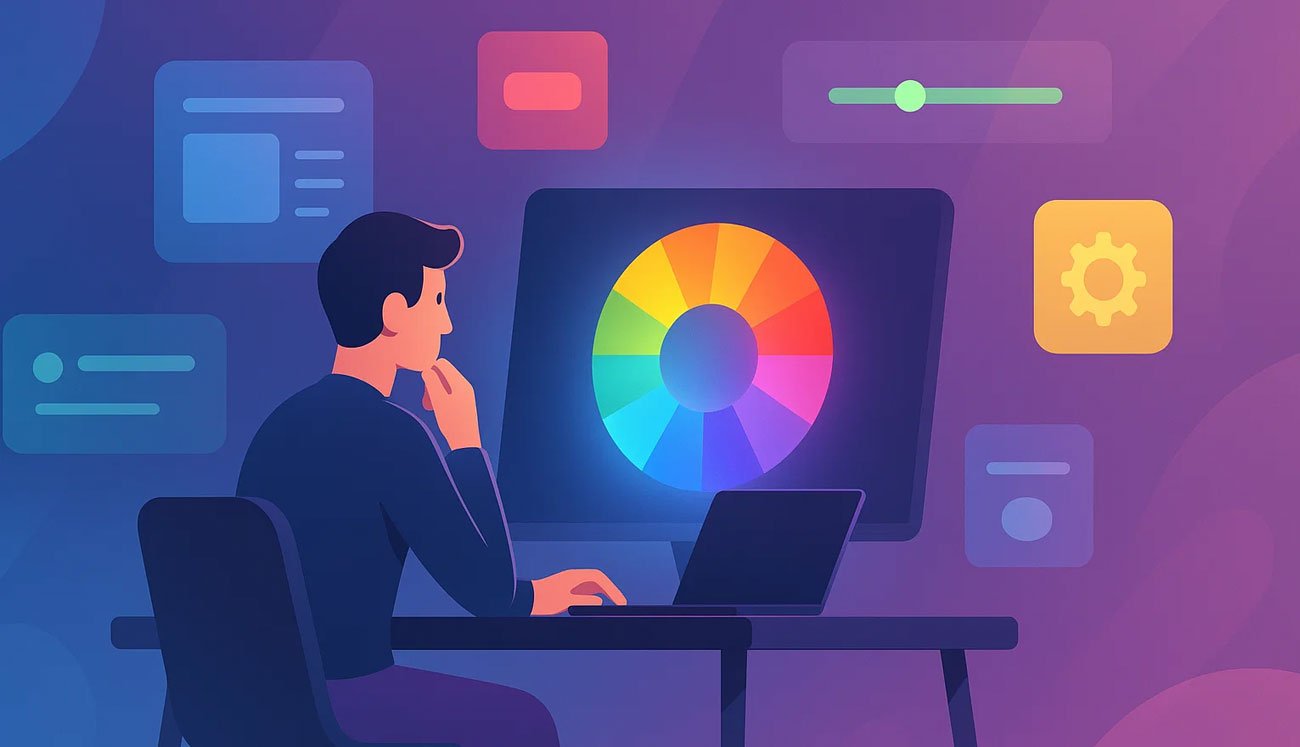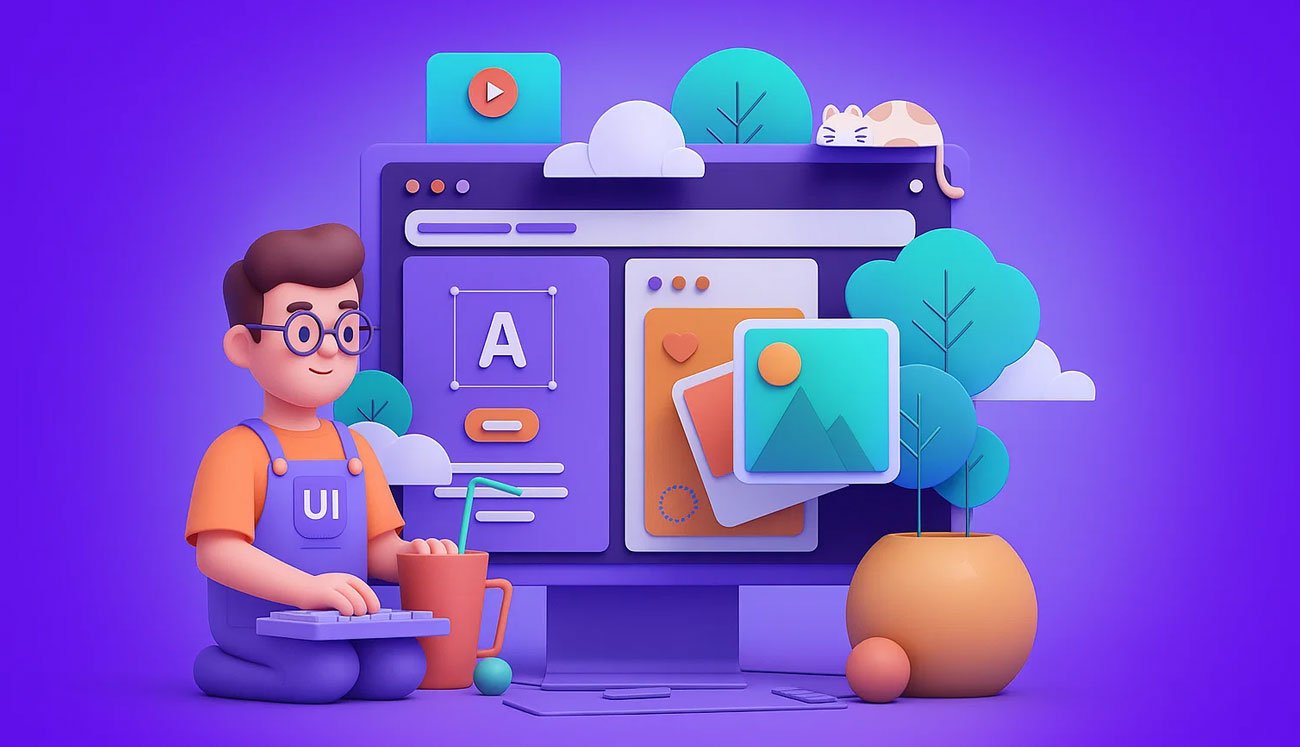Digital Product Design vs. Graphic Design: What’s the Difference?
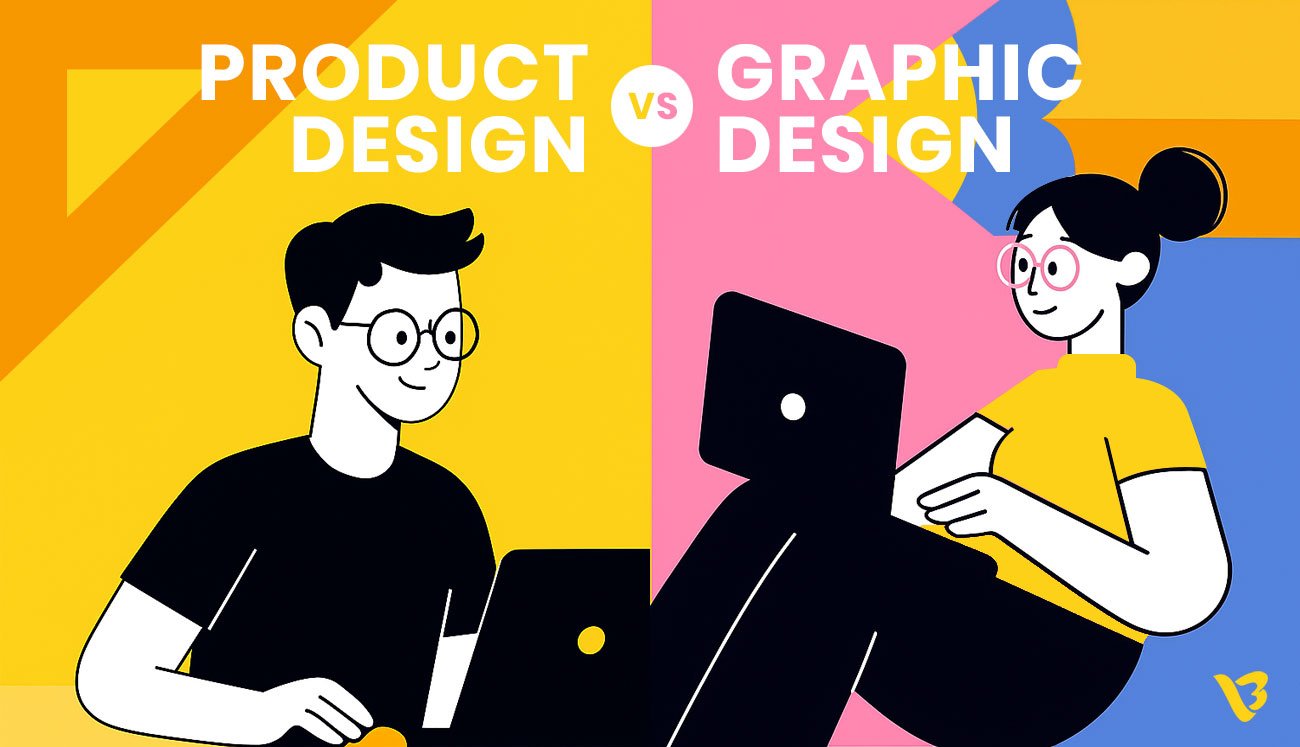
Ever wondered who creates the graphics for an app and who ensures that it actually works like you expect it to? That is the moment when people get confused between graphic design and digital product design. They both require some creativity and are visual in nature, but differ greatly in their output.
In this blog, we will walk you through the difference between graphic design and product design briefly
Understanding the Basics
What is Graphic Design?
Graphic design is visual storytelling. It is the act of combining text, images, color, and layout in a precise and aesthetically pleasing way to make a certain statement. A bit of graphic design can be found everywhere – from logos for businesses and magazine covers to billboard advertisements and social media posts.
There is just one purpose behind graphic design; it is meant to attract your eye to whatever it is presenting and convey its message compellingly. As graphic designers, they focus on the look and feel of something, be it creating a brand identity or an advertisement campaign.
Common tools utilized:
- Adobe Photoshop
- Illustrator
- InDesign
- Coral Draw
- Canva (lighter stuff)
What is Digital Product Design?
This term means a broader and functional approach. It is creating usable digital experiences – websites, mobile apps, dashboards, maybe even interfaces for smart devices. The concern is not only with aesthetics but also with ergonomics or user interaction.
A product designer would need to know about user behavior, dissect the problems, and design flows that would, ideally, make life easier. They have to think beyond just looks into structure, interaction, and user testing.
Some aspects covered:
- User Experience (UX)
- User Interface (UI)
- Interaction Design
- Usability and Testing
Popular tools used:
- Figma
- Adobe XD
- Sketch
- Miro (for user flows and collaboration)
In short, graphic design is visual, while product design is functional. Both are creative, but their end goals are different.
Key Differences at a Glance
Setting graphic design against digital product design makes apparent the stark contrasts between these approaches. While they might share some tools and visual laws, their approaches, goals, and processes are quite different.
Here’s a barebones comparison:
| Feature | Graphic Design | Digital Product Design |
| Main Purpose | Visual communication & brand identity | Solving user problems through digital products |
| Focus | Looks, style & emotional impact | Functionality, usability, and user experience |
| Medium | Paint & digital (logos, & ads) | Digital-only (apps, websites, & software) |
| Process | Concept – Visual – Deliverables | Research – Wireframes – Prototypes – Testing |
| Thinking Approach | Aesthetic & brand-led | User-centered & data-driven |
| Tools Used | Photoshop & illustrator | Figma, sketch, and adobe |
Both kinds communicate and engage, yet different expectations may determine what a final product is. For instance, while a graphic designer may go on to design a logo for a company, it is that same company a product designer ensures the mobile app created is intuitive and easy to work with.
Hence, in the light of any hiring company or a creative choosing between a career path, knowing these fundamental differences is paramount.
What Graphic Designers Bring to the Table

Graphic designers are masters of visual storytelling; in short, they make design decisions so that the design looks great and communicates well. Some of their key skills include:
- Typography: Choosing fonts to help guide tone and readability
- Color Theory: Creating color schemes to evoke feelings and match brand identity
- Layout & Composition: Creating environments for visuals to appear clear and to flow
- Creative Thinking: Generating new ideas while staying with the brand image
- Software Usage: Using Photoshop, Illustrator, InDesign, and CorelDRAW
They channel their power into the compromise of aesthetics and communication visuals that spur an emotional connection.
What Product Designers Need to Succeed
Product designers prioritize functionality and user experience. Their skills transcend visuals and instead focus on user behavior and interaction. Some core skills are:
- UX Research: Analyzing the needs and pain points of users
- Wireframing & Prototyping: Building and testing digital layouts
- Usability Testing: Refining design by incorporating user feedback
- Design System Knowledge: Maintaining the consistency and scalability of a design
- Tool Mastery: Efficient use of Figma, Adobe XD, Sketch, Notion, and Miro
Working in very close collaboration with cross-functional teams, they make sure that every digital touchpoint feels natural, efficient, and user-friendly.
Graphic Design Workflow
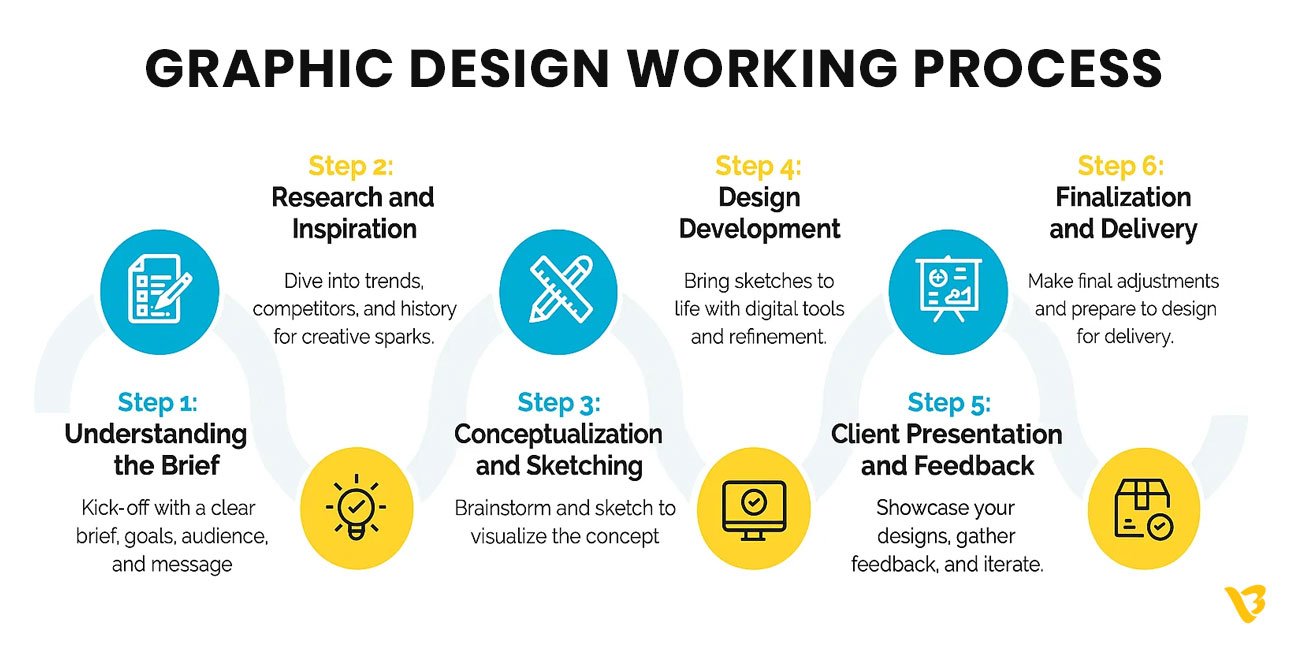
In traditional graphic design, the systematic and linear approach focuses primarily on creating the most polished visuals.
- Creative Brief: Grasping project goals and target audience with a direction for the style applied.
- Concept Development: Brainstorming visual ideas and conducting research into design references
- Design Execution: The actual implementation of layouts using some tools such as Illustrator or Photoshop
- Client Feedback: Reviewing, revising, and finalizing
- Final Delivery: Delivering final files required for printing or digital use
Visuals are created in such a way as to communicate a concept or enhance the brand.
Product Design Workflow
This workflow is cyclical and iterative, servicing the needs of user problems and experiences. Steps in the workflow might include:

- User Research: User interviews, surveys, or analytics to discover user needs
- Wireframing: Sketching out structures and layouts of the digital product
- Prototyping: Building interactive designs for testing
- User Testing: Gathering feedback to make product refinements
- Iteration: Making improvements based on actual use
It is therefore rather dynamic, always changing as it responds to user behavior and feedback.
End Goals: Art vs. Usability
Although both design areas may have some similar tools, they are cut with completely different blades.
Graphic design concerns itself with developing art for communication. It is about emotional impact, visual harmony, and aesthetics. An event poster or a brand’s logo is successful since it attracts attention and leaves an impression on the viewers’ minds.
Product design is, however, all about usability: A mobile app or a website, no matter how pretty they are, is judged even more by how they work. Can a user finish the task easily? Has it solved a problem for them?
Example:
Here, the graphic designer will work on showing the food delivery brand – create the logo or ads for social media. But the product designer will make sure that it is very easy to order food using the app in a few taps.
In a nutshell, graphic design beautifies; product design makes it useful.
Can a Graphic Designer Become a Product Designer?
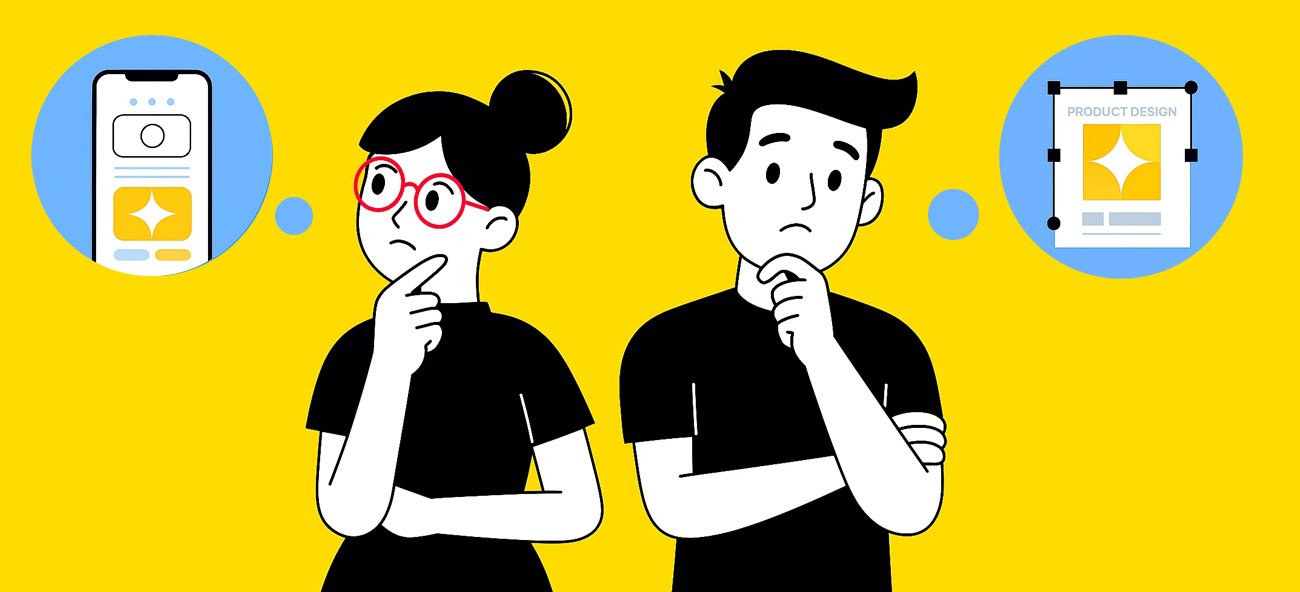
The transition from graphic design to product design is the natural step creatives take when they want to shift from working solely on visual media to tackling real user problems. Both have design principles, yet this represents a key change in mindset.
Designers already know layout, color, and visual hierarchy-the three elements they will need to know in product design. The next step is to learn about UX (user experience), UI (user interface), and user-centered design.
Skills to Develop:
- UX research: Learn how to gather insights from real users
- Wireframing & prototyping: Practice with Figma or Adobe XD
- User testing: Learn how to test designs and act on feedback
- Design systems: Create consistent designs for scalable products
- Collaboration tools: Build proficiency in communications among product teams and developers
Online magazines are filled with countless articles from designers who find transitions rewarding and impactful, especially when their design has started solving the real problem.
It’s not about leaving art behind. It’s about applying design to function, and making products that people love to use.
Collaboration or Conflict?
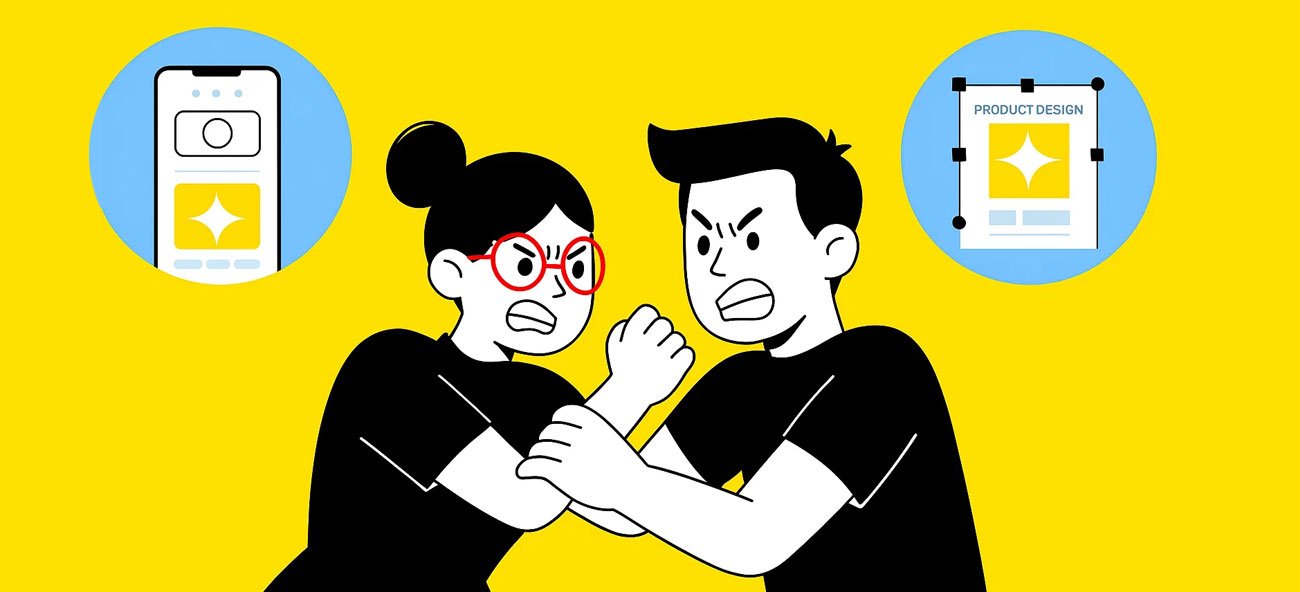
Sometimes Graphic Designers and Product Designers work on the same group projects-the nature of their work is different but closely complementary. The confusion or tension arises when expectations are not set correctly.
When done right, collaboration has the potential to create beautiful things.
Workflow example: A product designer would map out the user journey and wireframe an app screen. Following that, a graphic designer takes up the task of injecting the visual identity of the brand-fondness for certain typefaces, a color palette, icons-into the design to make it highly engaging.
Where both roles respect each other’s strengths-usability from product design and creativity from graphic design-the solution ends up being beautiful and usable.
A balanced team must have both: one partner working on a problem and the other making the solution look shiny.
Which Services Drive Business Growth?
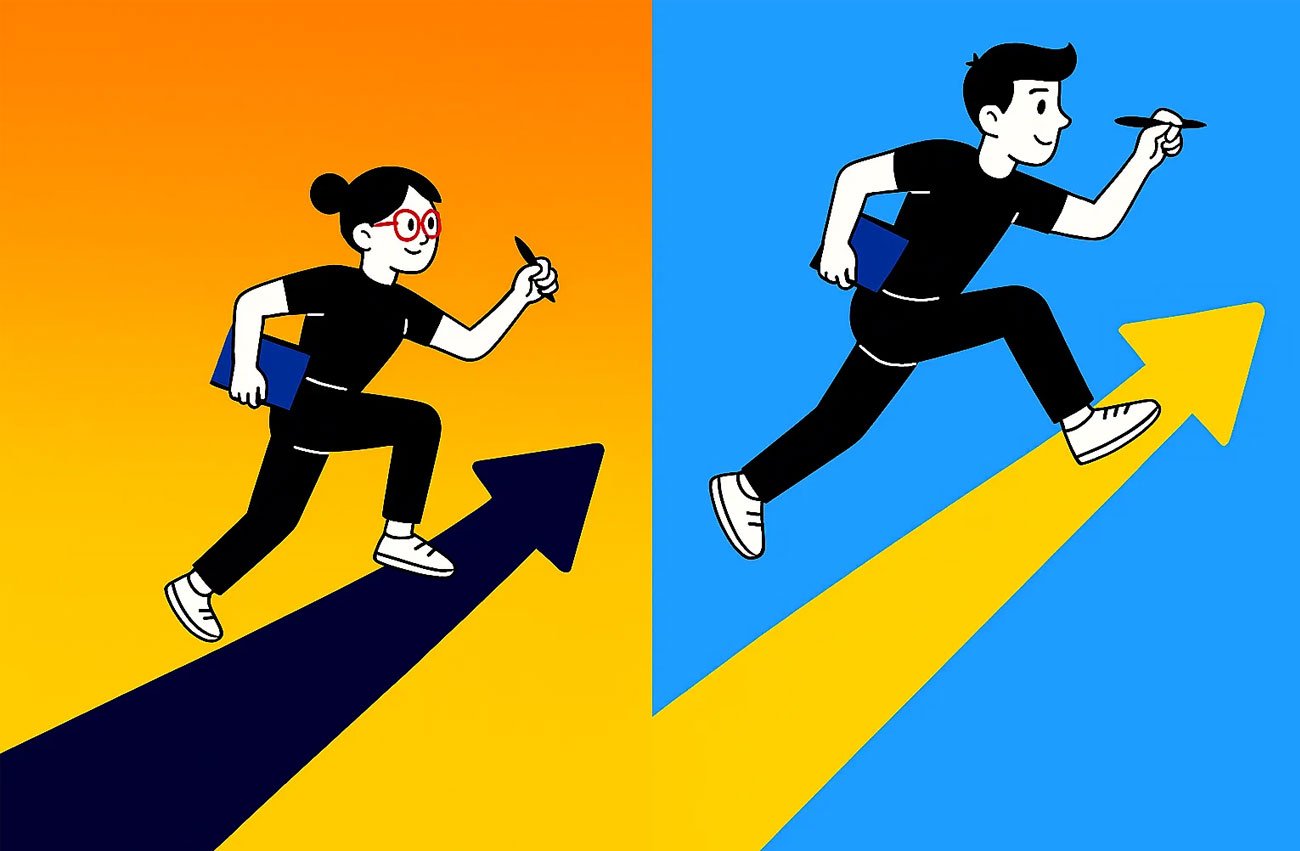
Graphic design puts forth your brand’s image. Logos, advertising flyers, and the like are a few collateral media designed by graphic designers to create trust and capture attention and to communicate the story of an entrepreneur. Trying to stand out in a marketplace is a very difficult task for them because the competition is so stiff.
Product design, conversely, centers on user experience-a simple platform, app, or website that is intuitive to navigate and simultaneously able to convert visitors into loyal customers.
These services help businesses build stronger identities, improve engagement, and drive measurable results. Visual Best combines forces so that the impact is not just beautiful but meaningful.
Future Trends (2025 & Beyond)
Artificial intelligence, automation, and hybrid roles will be reshaping the future of product and graphic design in 2025.
Tools such as Figma AI and Adobe Firefly, according to Adobe, are allowing for expedited workflows. Theoretically, this frees up designers to spend more time on strategy and creativity, keeping in mind that automation cannot replace talent; rather, it compliments.
On the other hand, graphic designers must adapt by learning motion design, accessibility, and interactive media. The line between different roles is fading away, so you must remain flexible.
Put simply, for success in 2025, creativity must be functional and must anticipate trends.
How Visual Best Can Help
Visual Best is placed among the best agencies that combine creative visuals with user-centric product design.
We help brands craft standout identities and provide seamless digital products: from logos to landing pages, from dashboards to mobile apps.
We turn ideas into experiences that connect, convert, and captivate. Whether launching a new brand or looking to scale its digital presence; we help businesses stand out and grow with very design that delivers results.
Our strength? A team skilled in both graphic and product design so every project looks good and works great.
Conclusion
Graphic design focuses on visuals. Product design focuses on experience. Both are essential-but they serve different goals. Graphic designers build emotional appeal. Product designers solve user problems.
Understanding the difference helps businesses hire better; it also helps creatives choose the right career path. Sometimes they overlap, sometimes they do not-but when merged right, a design that is both stunning and usable emerges.
FAQs
1. What’s the main difference between graphic and product design?
Graphic design is more oriented towards visual logos, brand, layouts. Product design is about user experience, functionality, and problem-solving for the user. One is about visual communication; the other is about making tangible and usable products for people.
2. What kind of benefits does my business stand to gain from graphic and product design services?
Graphics design consolidates your brand identity through visuals linked to audience perception. Product design, on the other hand, ensures digital products (apps, websites) are conceived for usability, considered goal-driven and set to maximise conversion and customer satisfaction.
3. Do I need a graphic and the product design for my business?
That depends upon your goals! Graphic design would be applicable if you are working with establishing visual presence- branding, social media, packaging. Product design would play into experiences and products that work for the user- mobile apps, websites, dashboards. Quite a few clients, combined, need both.
4. How are graphic design and product design supposed to differ in terms of deliverables?
The graphic design end product has logos, brochures, banners, packaging, and brand assets. The product design end product has wireframes, user flows, interactive prototypes, and high-fidelity UI designs optimized for functionality and user experience.
5. How much time is usually taken to finish a graphic/product design project?
Timelines depend on project scope. A branding design or poster design could take 3 to 5 days. Sometimes a whole product design, like a mobile app or platform, will require somewhere between 3 and 6 weeks. We always send a timeline in detail before we begin.


